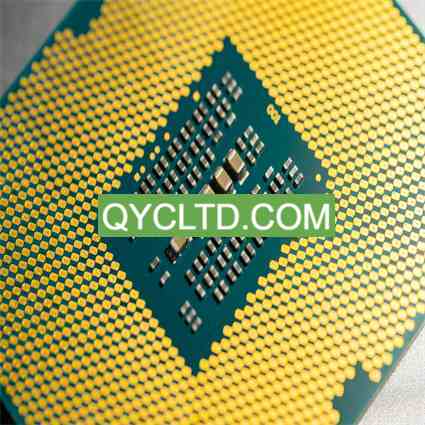Interposer vs Substrate Manufacturer.When comparing an interposer versus a substrate manufacturer, it’s crucial to understand their distinct roles in semiconductor packaging. Interposers provide intermediate layers for connecting chips with high density and precision, essential for advanced technologies like 2.5D and 3D integration. Substrate manufacturers, on the other hand, focus on producing the foundational layers that house and support semiconductor devices, ensuring mechanical stability and electrical connectivity. Both are vital in the electronics supply chain, but their specialized functions cater to different aspects of chip packaging and integration.
In the realm of semiconductor packaging, interposers and substrates play crucial roles in the overall performance and reliability of electronic devices. Both serve as foundational elements in the assembly of integrated circuits (ICs), yet they differ significantly in their functions, materials, and applications. This article explores the differences between interposers and substrates, highlighting their unique characteristics, structures, materials, manufacturing processes, applications, and advantages.
What is an Interposer?
An interposer is a bridging layer that connects an IC to the package or PCB. It serves as an intermediate interface, facilitating electrical connections between the microelectronic components and the broader system. Interposers are particularly essential in advanced packaging technologies such as 2.5D and 3D integration, where multiple ICs are stacked or placed side by side on a single interposer to enhance performance and reduce form factor.

Interposeur vs fabricant de substrat
Structure of Interposers
Interposers can be classified into several types based on their structure and materials:
These are made from silicon wafers and feature fine-pitch through-silicon vias (TSVs) to create high-density interconnects. Silicon interposers are widely used in high-performance computing and advanced packaging applications.
Made from glass substrates, these interposers offer low electrical loss and high thermal stability. They are suitable for RF and high-frequency applications due to their excellent dielectric properties.
These are made from organic materials such as epoxy or polyimide. Organic interposers are more flexible and cost-effective, making them ideal for consumer electronics and less demanding applications.
Made from ceramic materials, these interposers provide high thermal conductivity and mechanical stability. They are used in high-reliability applications such as aerospace and defense.
Materials Used in Interposers
The materials used in interposers are selected based on their intended application and performance requirements:
Offers high electrical conductivity and precision in manufacturing fine-pitch interconnects.
Provides low dielectric loss and high thermal stability, ideal for RF and high-frequency applications.
Cost-effective and flexible, suitable for consumer electronics.
High thermal conductivity and mechanical stability, used in high-reliability applications.
The Manufacturing Process of Interposers
The manufacturing process of interposers involves several precise steps:
For silicon and glass interposers, the process begins with wafer fabrication, where the base material is prepared and cleaned.
Through-silicon vias (TSVs) or other types of vias are etched or drilled into the wafer to create vertical interconnections.
Conductive materials such as copper are deposited into the vias to form electrical connections.
Photolithography is used to create the desired circuit patterns on the interposer surface.
The interposer is assembled with ICs and other components using advanced packaging techniques such as flip-chip bonding or wire bonding.
Application Areas of Interposers and Substrates
Interposers and substrates are used in various high-performance and critical applications:
Interposers
Silicon interposers are used in CPUs and GPUs to enable high-speed data transfer and integration of multiple dies.
2.5D and 3D IC integration rely on interposers for efficient interconnects and reduced form factors.
Glass interposers are used in RF modules and antennas for their low dielectric loss.
Organic interposers are used in smartphones and other consumer devices for their cost-effectiveness.
Substrates
Substrates are used in PCBs for various electronic devices, providing mechanical support and electrical connections.
Substrates provide the base for flip-chip ICs, enabling high-density interconnects and thermal management.
Flexible substrates are used in wearable devices for their ability to conform to different shapes.
Ceramic substrates are used in high-reliability applications for their thermal stability and mechanical strength.
Advantages of Interposers and Substrates
Interposers
Interposers enable high-density interconnects, reducing signal loss and improving performance.
Facilitate 2.5D and 3D integration, allowing for higher performance and smaller form factors.
Available in various materials (silicon, glass, organic, ceramic) for different applications.
Silicon and ceramic interposers provide excellent thermal conductivity for heat dissipation.
Substrates
Provide a stable base for ICs and other components.
Enable complex routing and high-density interconnects.
High-performance materials like ceramic and BT resin offer excellent thermal management.
Materials like FR-4 and organic substrates offer a balance of performance and cost for consumer electronics.
FAQ
What is the main difference between an interposer and a substrate?
The main difference is their function: an interposer serves as an intermediate interface facilitating electrical connections between microelectronic components and the broader system, while a substrate provides the foundational layer on which ICs and other components are mounted, offering mechanical support, electrical connections, and thermal management.
Can interposers be used in consumer electronics?
Yes, organic interposers are commonly used in consumer electronics like smartphones and tablets due to their flexibility and cost-effectiveness.
What materials are commonly used for high-performance interposers?
Silicon and glass are commonly used for high-performance interposers due to their excellent electrical properties and high-density interconnect capabilities.
Are substrates only used in traditional PCBs?
No, substrates are used in various applications, including flip-chip packages, flexible electronics, and high-reliability aerospace and defense systems. They provide the necessary support and connections for different packaging technologies.
 Fabricant de substrats de boîtier de semi-conducteur
Fabricant de substrats de boîtier de semi-conducteur